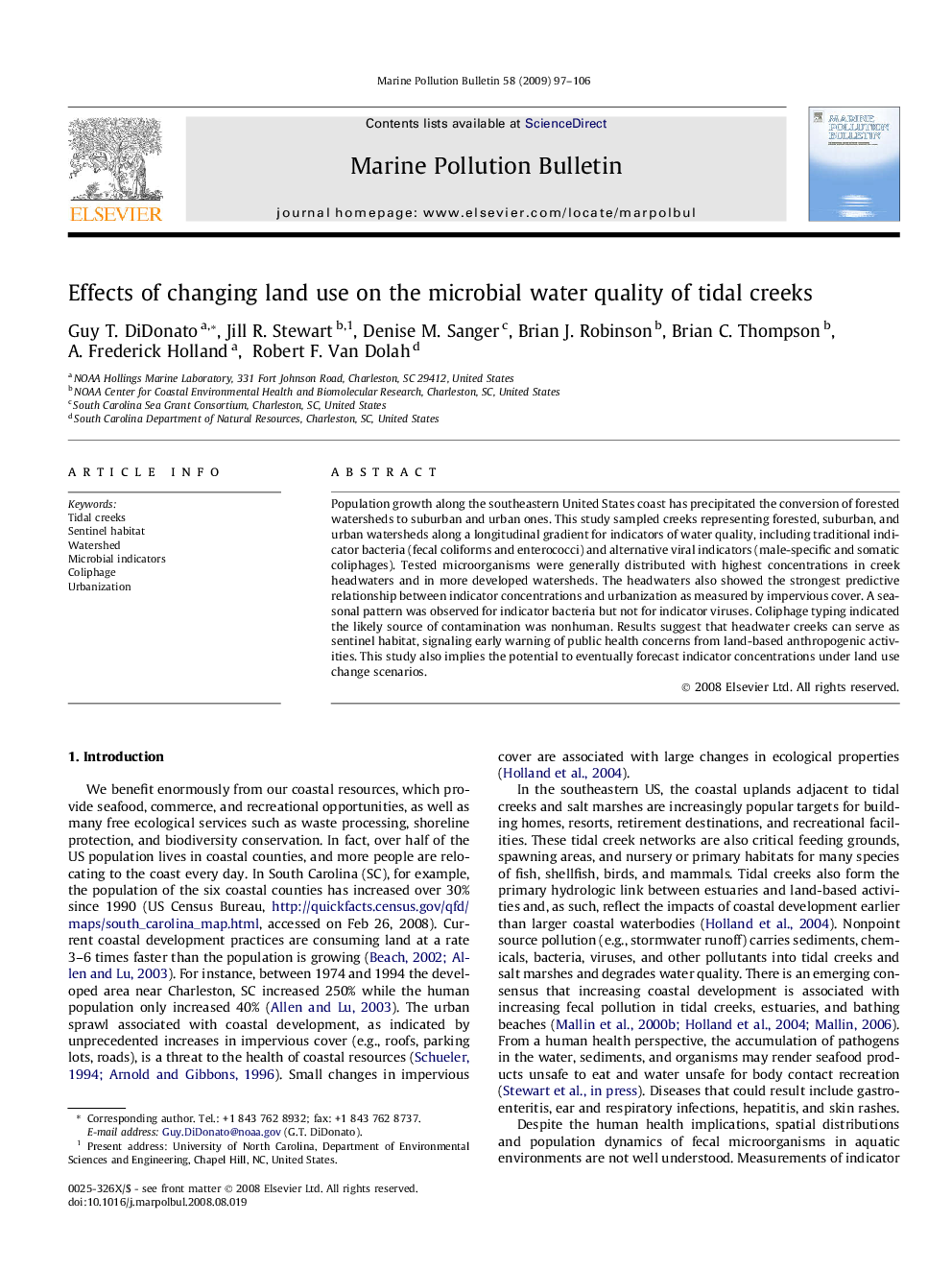| Article ID | Journal | Published Year | Pages | File Type |
|---|---|---|---|---|
| 4476915 | Marine Pollution Bulletin | 2009 | 10 Pages |
Population growth along the southeastern United States coast has precipitated the conversion of forested watersheds to suburban and urban ones. This study sampled creeks representing forested, suburban, and urban watersheds along a longitudinal gradient for indicators of water quality, including traditional indicator bacteria (fecal coliforms and enterococci) and alternative viral indicators (male-specific and somatic coliphages). Tested microorganisms were generally distributed with highest concentrations in creek headwaters and in more developed watersheds. The headwaters also showed the strongest predictive relationship between indicator concentrations and urbanization as measured by impervious cover. A seasonal pattern was observed for indicator bacteria but not for indicator viruses. Coliphage typing indicated the likely source of contamination was nonhuman. Results suggest that headwater creeks can serve as sentinel habitat, signaling early warning of public health concerns from land-based anthropogenic activities. This study also implies the potential to eventually forecast indicator concentrations under land use change scenarios.
